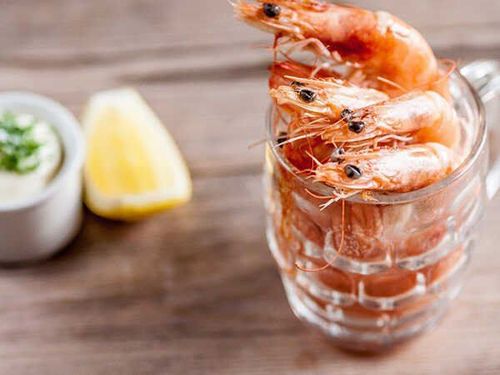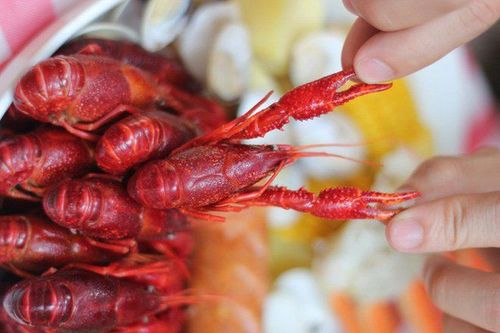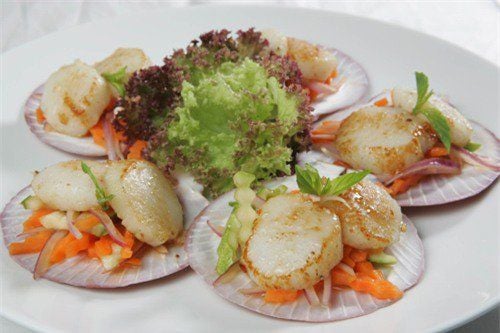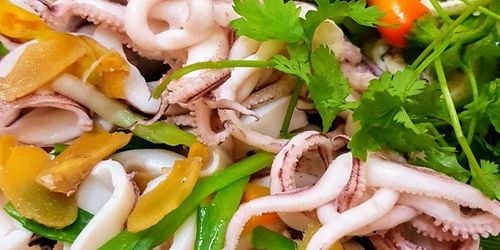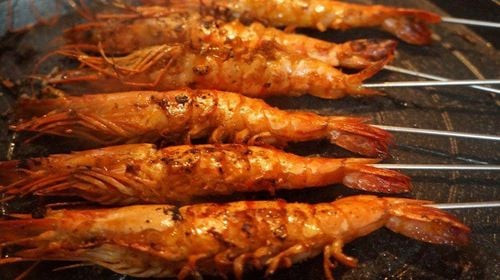This is an automatically translated article.
Shrimps are considered part of a balanced diet, they provide a number of important nutrients good for heart health. Even those with high cholesterol, the benefits from eating shrimp outweigh the risks.
1. Do shrimp have a lot of cholesterol?
Around the question of whether people with heart disease should eat shrimp, doctors previously advised these subjects not to eat a lot of shrimp because of its high cholesterol content. However, researchers now suggest that shrimp does not contribute to heart disease or raise cholesterol. So shrimp can still be a great choice for a healthy, balanced diet.
The US Department of Agriculture says that 100g of shrimp contains 189mg of cholesterol. The Nutrition Guide for Americans recommends consuming as little cholesterol as possible. Although it does not give a specific amount, a healthy menu requires only about 100-300mg of cholesterol per day.
In the past, doctors thought all cholesterol was bad for health. However, experts are now discovering that high-density lipoprotein (HDL), a.k.a. good cholesterol, can balance out the negative effects of low-density lipoprotein (LDL), or bad cholesterol, aiding health and well-being. health is stable. In other words, good cholesterol HDL can help reduce the risk of heart disease, while bad cholesterol LDL does the opposite.
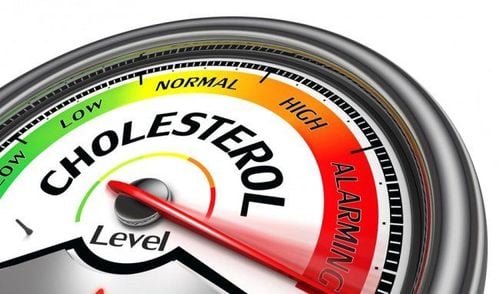
Có 2 loại cholesterol xấu và cholesterol tốt
In 1996, a group of scientists discovered that eating shrimp simultaneously increased levels of both LDL and HDL cholesterol. Foods high in saturated and trans fats can also raise LDL cholesterol levels. However, 100g of shrimp contains less than 0.3g of fat and is mostly unsaturated. In other words, the fat content in shrimp is unlikely to raise bad cholesterol levels.
A 2018 study noted that most foods high in cholesterol are also high in saturated fat. However, shrimp and egg yolks are the exception. Both are low in saturated fat, with even more nutrients. The authors suggest that shrimp and eggs are healthy foods and do not increase the risk of cardiovascular disease.
The American Heart Association (AHA) even lists shrimp as foods that can lower cholesterol levels - as long as you don't make fried shrimp. The AHA adds that shrimp contain some omega-3 fatty acids. This is a type of healthy fat, beneficial for the cardiovascular system and other body functions. So in general, eating shrimp is better for the heart than making the disease worse.
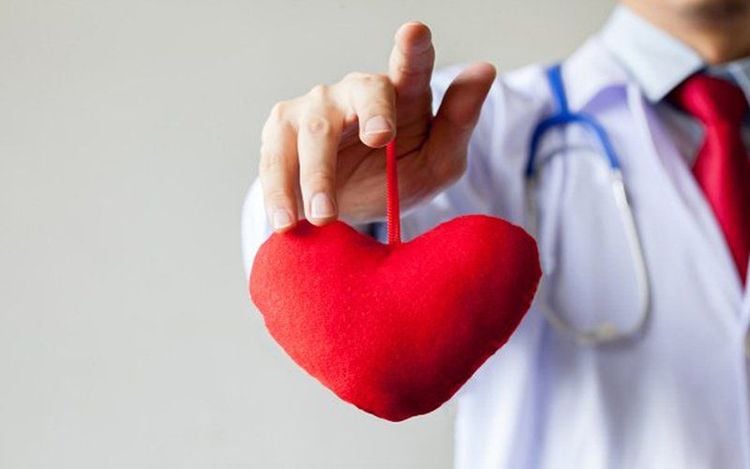
Ăn tôm tốt cho tim mạch
2. Nutrition of shrimp compared to other seafood
2.1. Shrimp In addition to cholesterol, 100g of cooked shrimp also provides many of the following nutrients:
99 kcal of energy; 24g protein; 0.3g fat; 0.2g carbohydrates ; 70mg calcium; 0.5mg iron; 39mg magnesium; 237mg phosphorus; 259mg potassium; 111mg sodium; 1.64mg zinc. As can be seen, shrimp contains low calories but high protein and many other essential minerals.
2.2. Lobster Other seafood also has levels of cholesterol and certain nutrients. So just like shrimp, they can also provide health benefits. For example, lobster contains more cholesterol than regular shrimp. This seafood is also low in calories and saturated fat, but high in protein, omega-3s, and selenium.
2.3. Crab Meat has more protein, less fat, calories and cholesterol than shrimp, in addition to providing more vitamins. However, crab contains more sodium than shrimp, so it is not suitable for people with high blood pressure.
2.4. Salmon Salmon is a good source of protein and B vitamins and is rich in healthy omega-3 oils. These substances help boost energy, support metabolism and build a healthy nervous system. Salmon is higher in fat than both lobster and shrimp, but lower in cholesterol.
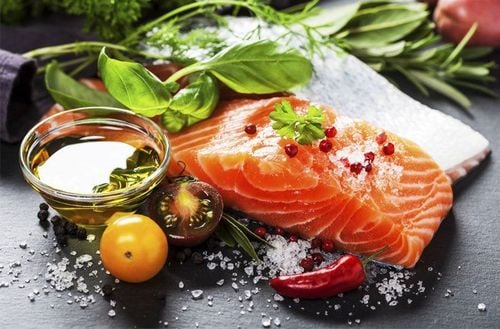
Cá hồi là nguồn bổ sung omega-3 dồi dào
2.5. Oysters, clams and mussels Oysters, clams and mussels are rich in nutrients such as iron, zinc, vitamin B-12, phosphorus, niacin and selenium. Clams can also lower bad LDL cholesterol and increase good HDL cholesterol.
3. Risks of eating shrimp
Eating shrimp may not raise cholesterol levels, but people should consider some of the following factors before including shrimp in their daily diet.
3.1. How to cook People with heart disease should eat shrimp provided that the processing method must be healthy. To ensure quality shrimp with as little cholesterol as possible, you can cook it in the following ways:
Bake, boil, or sauté with little oil; Season with spices, garlic and herbs; Use a few drops of fresh lemon. Don't:
Fry or sauté with a lot of butter or oil; Serve with cream or butter sauce; Add unnecessary salt; Serve with plenty of carbohydrates, such as noodles, rice, etc. Some experts allow you to eat shrimp raw - in sashimi, for example. However, carefully choose the right type of shrimp that can be eaten raw, ensuring it is fresh and does not have a fishy smell. It is best to eat raw shrimp only at restaurants with professional chefs who know how to handle them carefully to ensure safety. Experts recommend that children, pregnant women and people with weak immune systems should not eat raw shrimp.
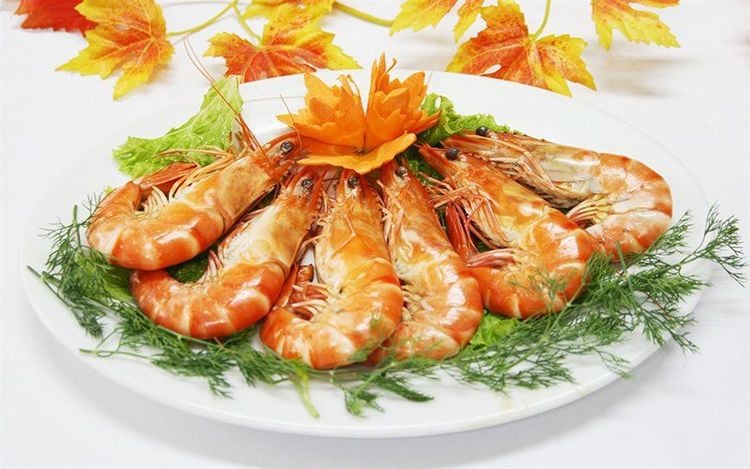
Chế biến tôm với ít dầu mỡ để đảm bảo nguồn dinh dưỡng cho cơ thể
3.2. Contaminants Should check the origin of shrimp before buying. Shrimp can become contaminated from contamination at sea or from uncontrolled shrimp farming. However, even the information on the label cannot guarantee the safety of shrimp. Both farm-raised and wild-caught shrimp are at risk of containing contaminants.
Shrimps from certified farms are usually a better choice. Mercury is a particular concern with certain types of seafood. However, the AHA said the mercury content in shrimp is quite low.
3.3. Storage and handling Improper storage of shrimp can increase the risk of food poisoning.
Shrimp should be stored in the refrigerator at ≤ 4°C for 2 - 3 days; If storing longer than 2 days, place shrimp in a plastic container and freeze; Do not freeze shrimp that have been defrosted when sold in the store; If not eating shrimp immediately after cooking, cool quickly and place back in the refrigerator to store within 2 hours; In addition, bacteria will proliferate at a temperature of 4.5 - 60°C. Therefore, it is necessary to cook shrimp immediately after taking it out of the refrigerator; Should not be used when the shrimp meat becomes cloudy after a period of time outside room temperature; When cooking shrimp, it needs to be at least 63°C or more. 3.4. Allergies Like clams, shellfish, and mold, some people with shellfish food allergies may also be allergic to shrimp. These people should avoid all shrimp-related products, including products made with shrimp or flavored with shrimp.
Signs of an allergic reaction are usually:
Hives or rash; Swelling; Shortness of breath .

Nổi mề đay do dị ứng với tôm
If any of the above symptoms are present, the patient should be taken to a medical facility immediately because there is a risk of anaphylaxis. This is a serious allergic reaction that can quickly become life-threatening.
In summary, doctors consider shrimp to be a safe food for most people, regardless of high or low cholesterol levels. Consuming shrimp in moderation can provide the body with many essential nutrients, even eating shrimp is good for the heart. People who must follow a strict diet set by a doctor or nutritionist should ask carefully before eating shrimp. Patients with seafood allergies should avoid eating shrimp altogether.
In order to improve service quality, in addition to bringing a system of modern and standard medical machines into medical examination and treatment, Vinmec International General Hospital also offers many perfect medical services that bring many benefits to patients. convenience for customers.
Especially with a team of qualified and experienced medical doctors who are always ready to examine, treat and advise, customers can rest assured and choose the examination service at Vinmec.
Customers can directly go to Vinmec Health system nationwide to visit or contact the hotline here for support.
References: medicalnewstoday.com, healthline.com





